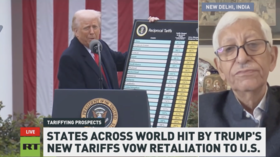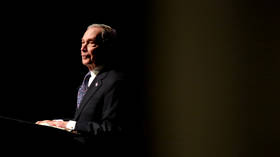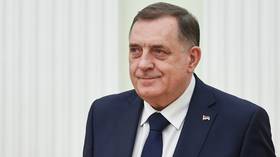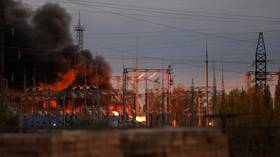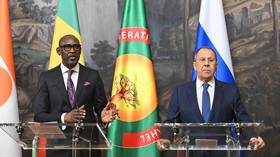Revolution begins: Mass protests, bloody uprising & Tsar abdicates (#1917LIVE coverage)
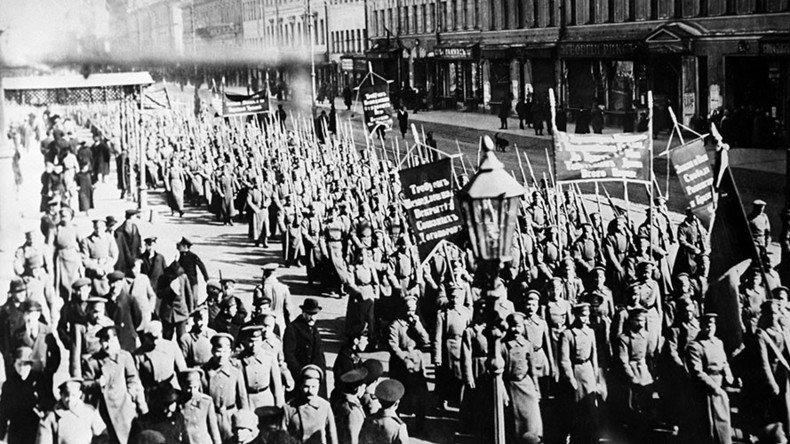
An all-out strike in Petrograd, bread shortages, looting, anarchy will shake Russia in March 1917, pushing Tsar Nicholas II to abdicate. #1917LIVE – RT’s social media real time drama of the events from 100 years ago – is nearing its first climax.
FOLLOW LIVE UPDATES: #1917LIVE: Russian revolution begins
In early March 1917, Russia is in total mayhem with an all-out strike sweeping through Petrograd (present day St. Petersburg) after 36,000 workers were left with no pay, no workplace (and no military draft exemption), by the locked-out Putilov Factory.
Bread shortages are also bringing people to the streets, causing crime and looting of bakeries and bread shops. People are rampaging across the city, demanding bread.
#1917LIVE: Retweet the Revolution as Russia reaches the point of no return. @RT_1917 special coverage on March 8-16 pic.twitter.com/ckmLtkt0FV
— RT (@RT_com) March 7, 2017
Protesters engage in fierce clashes with police, sent to the city to maintain order, and are setting up barricades on the city’s outskirts.
Pessimism over Russia’s involvement in World War I has been growing stronger.
HAPPENING NOW: Reports of ‘#Bread’ chants at rally in #Petrograd - updates to follow #1917LIVEpic.twitter.com/bbnrL30vRj
— Russian Telegraph (@RT_1917) March 6, 2017
Great revolutionary spirit on the streets. Tens of thousands chanting #Bread! & #WeWantBread! #1917LIVE
— Student Vladimir (@StudentVlad1917) March 6, 2017
The country plunges into a state of “mass psychosis,” as one contemporary observer put it.
After days of unrest, which claimed the lives of 150 people in clashes with the military, Nicholas II decides to abdicate.
DEVELOPING: #Petrograd in turmoil after jobless are told they’ll be mobilized for the front (no more duty exemptions) #1917LIVE
— Russian Telegraph (@RT_1917) March 7, 2017
Possible introduction of bread coupons sparks outrage in #Petrograd#1917LIVEpic.twitter.com/iaacs1sFd7
— Russian Telegraph (@RT_1917) March 6, 2017
We invite you to take a closer look and personally relive each groundbreaking event that is about to transform the Russian Empire beyond recognition.
To do so, follow our unique #1917Live project on Twitter, with live tweeting from the key figures of the Revolution and on 1917.RT.com, a dedicated website with extensive background on the events that are just around the corner.
Ahead of the intense coverage, here’s a recap of what has happened in recent days.
Petrograd began sharpening its tools for an uprising as early as February with “bread riots” spreading across the city, with the military and the church being almost non-existent as an independent force.
The powerful empire was collapsing right in front of people’s eyes. The city was suffering from staple food disruptions, and prices were soaring. People were queuing up the streets near bakeries and other shops in freezing temperatures.
So cold out there on streets. This winter is the harshest we’ve experienced in years #1917LIVEpic.twitter.com/VK256sGW3S
— Gendarme Zavarzin (@Gendarme_1917) March 5, 2017
Meanwhile, Russia, as part of the Entente Alliance, suffered huge losses against the German forces.
This was happening amid Tsar Nicholas’ growing concerns over the State Duma, which was more and more opposed to his rule.
Around that time, a special military district was established in Petrograd, aimed at dealing with potential uprisings and revolts, headed by General Sergey Khabalov, who cautioned citizens against taking part in protests.
The interior ministry drafted a plan to dissolve the State Duma.
Petrograd is FULLY under control. Some minor strikes, but nothing to concern govt #1917LIVEpic.twitter.com/u0adtHc6iA
— General Khabalov (@GenKhabalov1917) March 4, 2017
At the end of February, the situation in Petrograd was heating up, with 80,000 to 250,000 people going on strike. Most businesses in Petrograd had to shut down. People with placards saying, “To hell with the monarchy!” flooded the streets of the capital. Soon, blood was spilt, as the monarch ordered the revolt to be put down.
There is a massive troop buildup in #Petrograd, with no fewer than 160k servicemen in the capital #1917LIVEpic.twitter.com/6t4dMCtdsr
— Russian Telegraph (@RT_1917) February 28, 2017
This was done by the heavy hand of General Khabalov and the Petrograd military, which dispersed the crowds with gunfire. The shooting reportedly came as a response to shots fired from the crowd. Scores of people were killed over those days, with many more were arrested.




